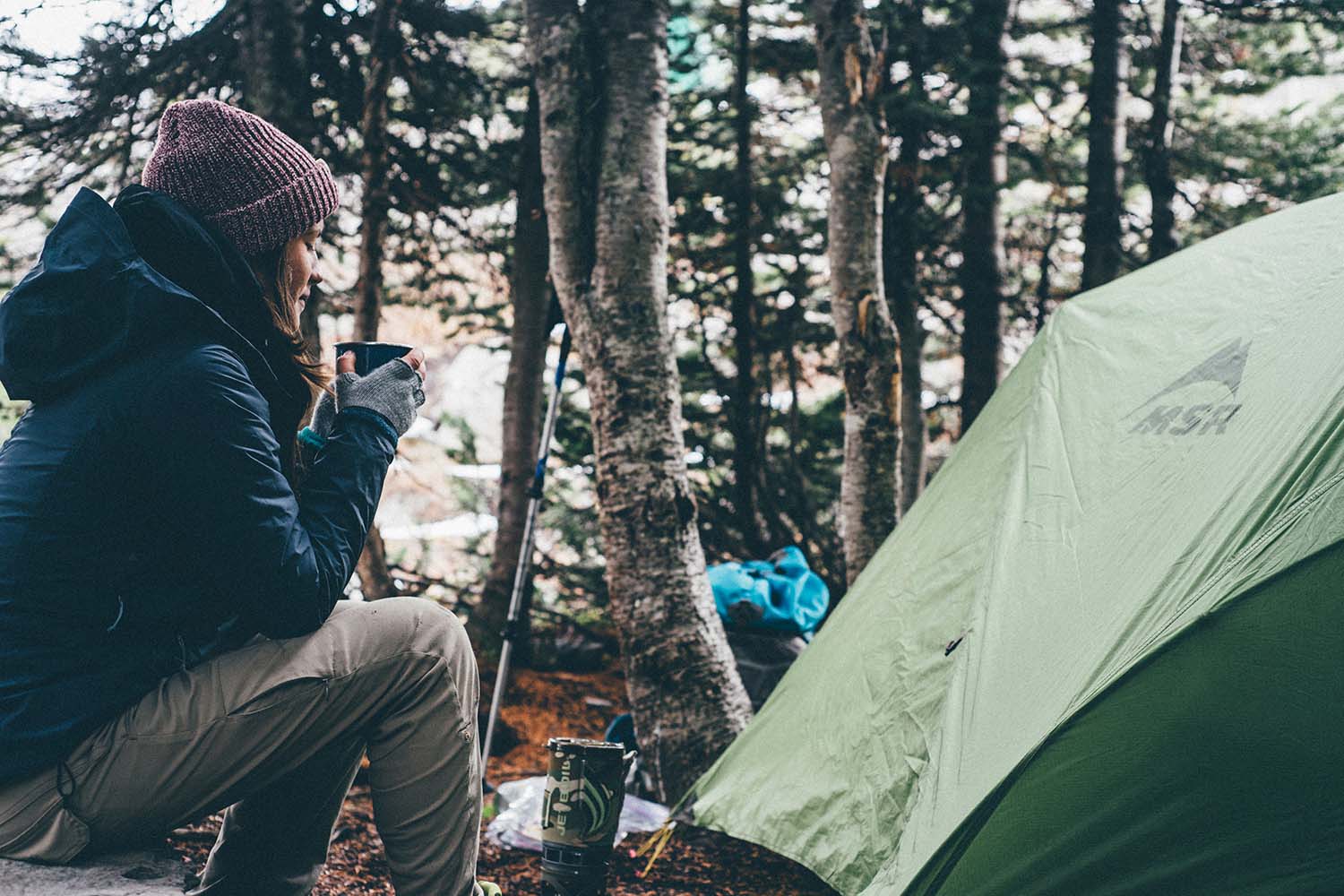When it comes to camping, having appropriate clothing is not just about showing off expensive gear or fashionable apparel. It’s primarily about ensuring your comfort, protection, and safety in various weather conditions, temperatures, and terrains. Camping clothes are about functionality first.
Camping often involves exposure to the elements, including rain, wind, sun, and temperature fluctuations. By wearing the right clothing, you can shield yourself from these elements and stay comfortable throughout your camping adventure.
For instance, a waterproof and breathable rain jacket will keep you dry during unexpected showers, while a sturdy pair of hiking boots will provide traction and support on rugged terrains. Layering your clothing with moisture-wicking base layers, insulating mid-layers, and weather-resistant outer shells allows you to adapt to changing temperatures and stay warm in colder conditions.
Camping clothing should prioritise functionality, durability, and versatility. It’s not just about looking stylish, but about choosing garments that are designed to withstand the rigours of outdoor activities. Fabrics that wick away moisture, dry quickly, and provide insulation are key. Additionally, clothing with features like UV protection, insect resistance, and abrasion resistance can further enhance your camping experience.
By following the appropriate dress code for camping, you are better prepared to handle the challenges and enjoy the beauty of nature. It allows you to focus on the experience itself, rather than worrying about discomfort or inadequate protection from the environment. So, whether you’re hiking through rugged trails, setting up camp, or simply relaxing by the fire, having the right camping clothes ensures you can fully immerse yourself in the outdoor adventure while staying safe and comfortable.
Let’s have a look at camping clothing in a bit more detail…
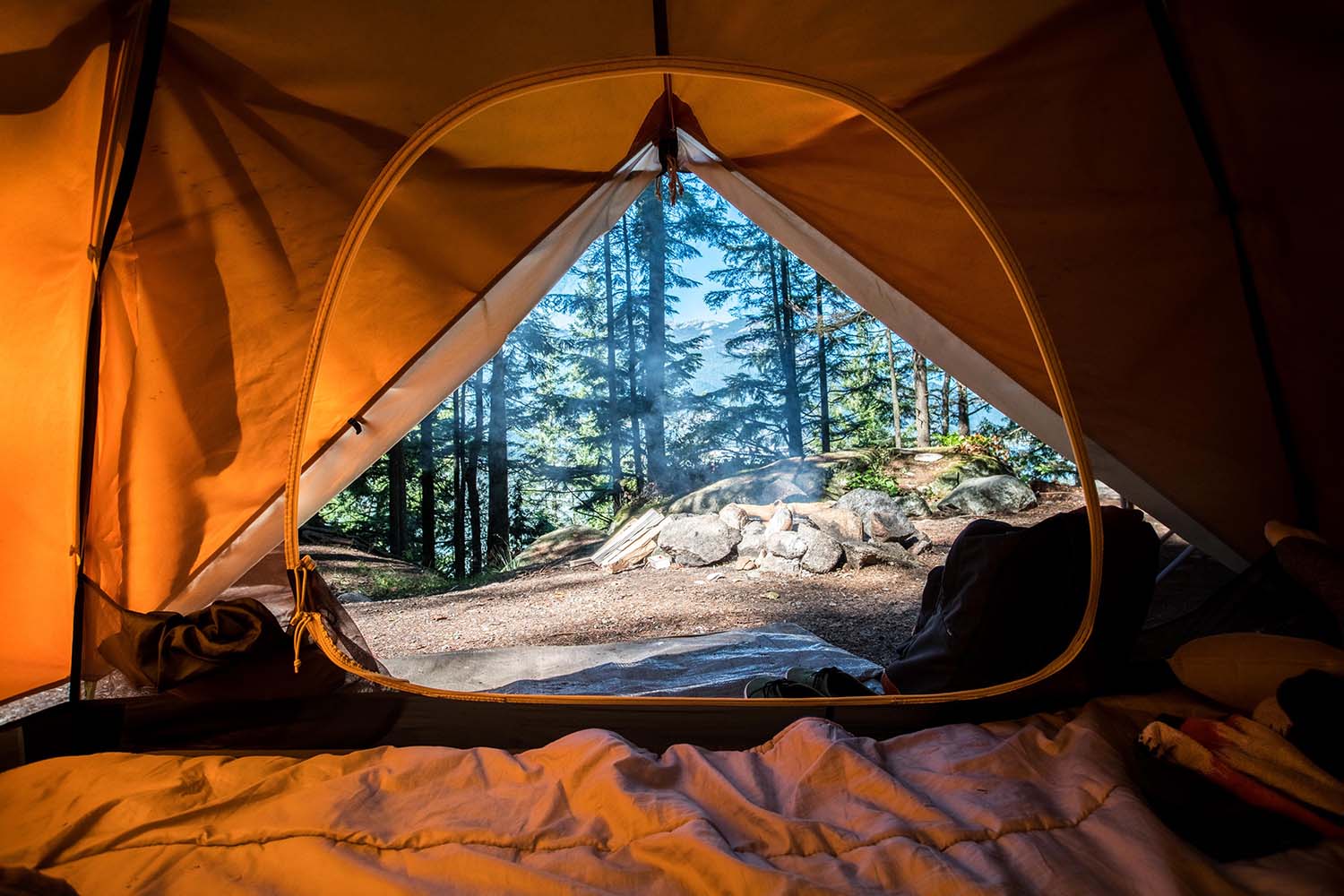
Photo, Scott Goodwill.
Shoes for Camping
Starting from the bottom up, your shoes are incredibly important on a camping trip. You won’t be walking around on paved, dry streets and your feet will have to be properly supported and waterproofed. Pick the best shoes for camping with these things in mind: they should be sturdy, with defined, slip-resistant soles; you want shoes that will protect and uphold your ankle and instep.
When you are away from the campsite hiking, do not wear open shoes, slippers, sandals, and the like. You’ll be going over some uneven terrain and they can cause you to trip, possibly sprain your ankle. They are fine for wear at the campsite though.
You may be treading through the water during a hike, make sure your shoes are water-resistant enough to keep the majority of that out.
Invest in multiple shoes for camping as you don’t want to wear a damp pair of shoes two days in a row. Hiking shoes are best; whilst a good pair of running shoes that can lace-up is also an option.
Camping Clothes for Winter/Autumn
Your clothes are the meat of the matter. If you’re new to camping, it’s likely that you packed too few clothes. Camping can be a dirty activity and there are usually no laundry facilities.
If you don’t bring enough clothes, you’ll be stuck wearing dirty ones for days. You’ll certainly want to dress according to the weather. In the colder months of the year, layers are your friend. The layer closest to your skin should be moisture-wicking and allow sweat to evaporate quickly.
In cold weather, wetness kept close to the body will make you feel even chillier. Wear thick socks to insulate your feet. Pack a hat to wear to insulate your head. It should fit closely.
The layer of clothes above this provides your actual insulation and should be fleece or synthetic material, which also allows moisture to leave the body easily. The outermost layer should be your thickest yet, like that parka we spoke about earlier. You will want at least one rain set, both rain pants, and a rain jacket to keep you dry if it rains or snows.
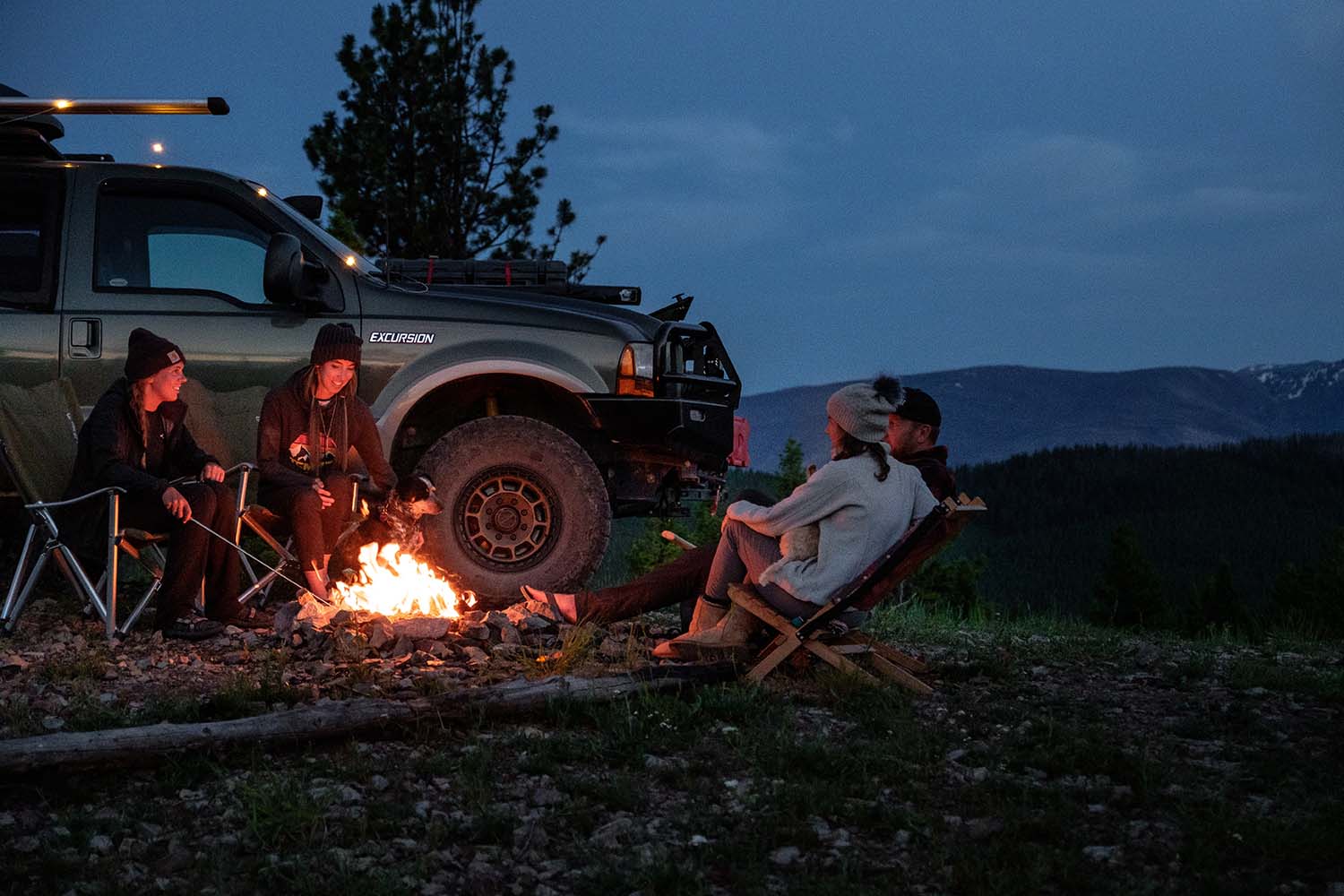
Photo, onX Offroad.
Camping Clothes for Summer/Spring
If you’re camping at this time of the year, you need to take into account the variance in temperature between daytime and nighttime, because it can be as much as 30 degrees. During the day, you’ll want to stick to natural fabrics like cotton and linen. For women, linen dresses would be an excellent choice.
These fabrics are lightweight and also absorb sweat and don’t heat up when the temperatures do. Polyester is also a good choice, particularly cotton-polyester blends. You’ll want to stick to lighter, pastel shades. Dark colours tend to absorb heat. You don’t want that in the summer.
Headwear and eyewear to protect those parts of your body from the sun is also a good idea. Shorts will be tempting in the hot weather, but you don’t want your legs exposed to insect life or poisonous plants.
Cargo pants are a good option here. They are lightweight and let moisture evaporate quickly so that your legs aren’t clammy. Plus, they have all these cool pockets to help you hold stuff. Complete your summer wear by packing a bathing suit.
At night, you’ll want to apply the same principle of layering as you would in winter. The trick is your winter clothing may not be exactly right as they would be too thick. Packing a pair of thinner hoodies to wear one over the other with insulated PJ bottoms with long underwear might be a good idea. If it’s too hot, you can always remove layers. It’s better to walk in too many clothes than be cold at night.
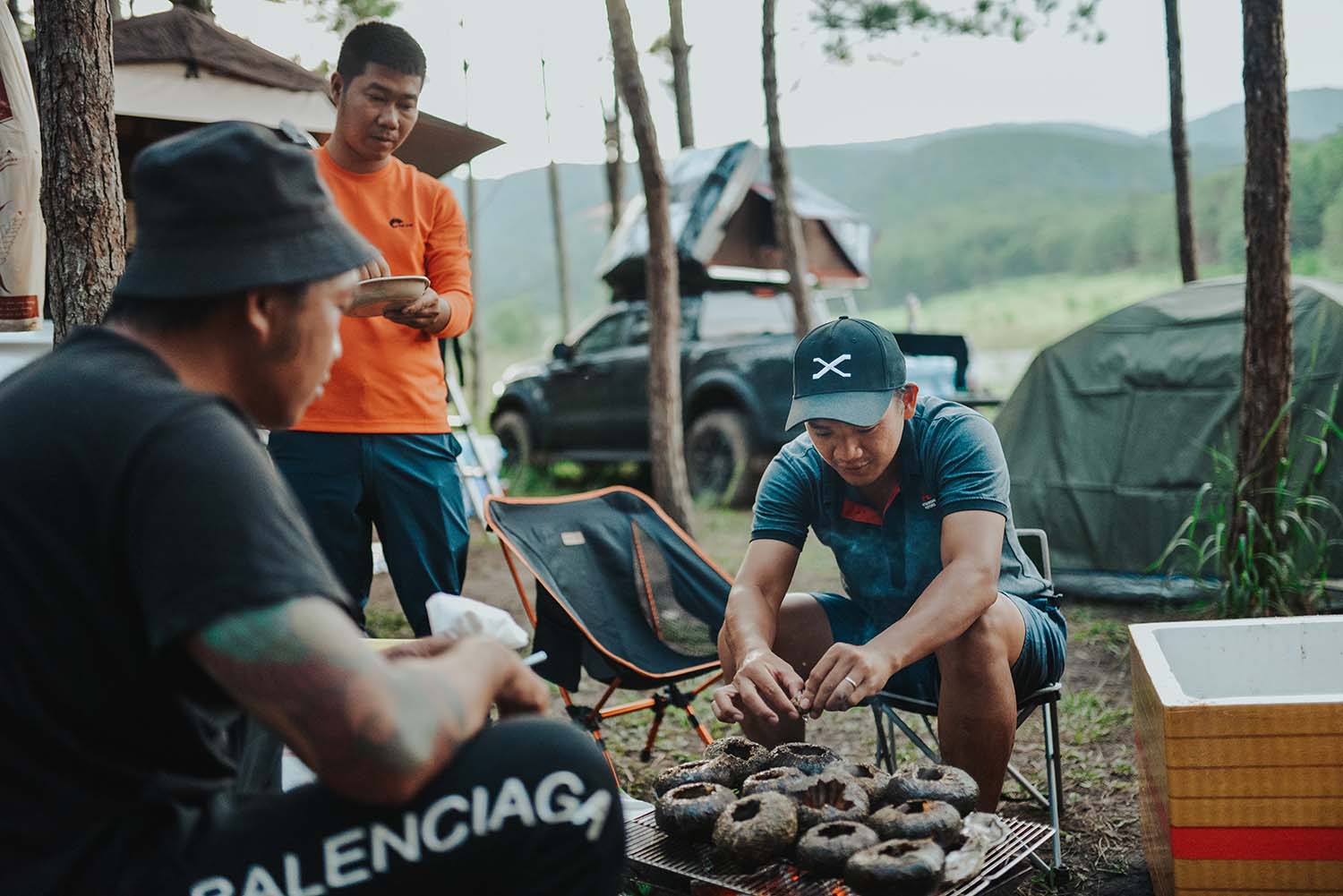
Photo, Dung Anh.
What Not to Wear When Camping
The advice here would be incomplete without a list of camping clothes that won’t work on a camping trip.
Expensive designer clothes and jewellery are out on a camping trip. It’s likely they won’t stand up to an activity like camping. You’ll ruin them, potentially lose the jewellery and be out of pocket for the cost.
Don’t wear perfumes or strong scents: It irritates wild animals and may prompt them to attack. That’s the attention you don’t want.
Avoid denim where you can: Denim jeans do not offer much protection against nighttime temperatures and hold moisture, which means they’ll make you cold.
Don’t wear clothes featuring obscenities, messages about drugs, and the like: It may prove offensive to those sharing the camping ground with you and can get you in trouble with the ground’s management.
Avoid white clothes: Camping is messy. White clothing is a beacon for messes. Stick to light and pastel shades as suggested earlier.
Do not wear clothes that are too tight, or too loose as your body function could be impaired. Loose clothing also has a way of catching on to things.
Do not sit naked in your campsite area, especially if you are at a public campsite; this is not so much a ‘what not to wear’ as a ‘what not to do’. Unless it is expressly permitted, or you are in a nudist colony, this is also likely to offend others. Common sense should prevail. Would you want to see someone naked on your camping trip?
Flip flops are also a big no-no: They are less sturdy than sandals and offer little to no protection to the feet once outside. Wear them only in your tent or in the shower.
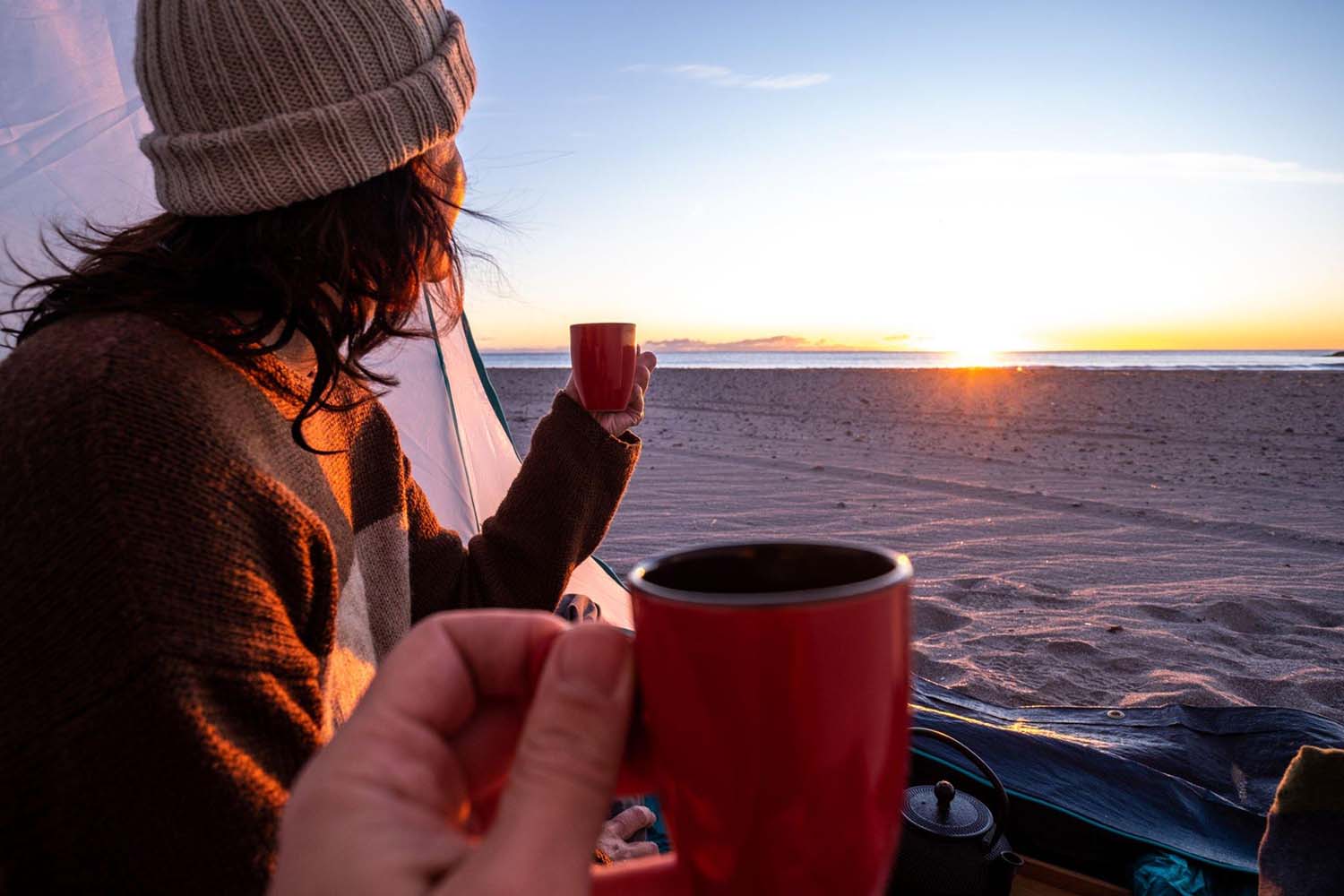
All You Need to Know About Camping Clothes
What should I wear while camping?
When camping, it’s important to dress in layers. Opt for moisture-wicking base layers, such as synthetic or merino wool shirts and leggings. Over that, wear insulating layers like fleece or down jackets, and top it off with a waterproof and breathable outer shell to protect against rain and wind. Don’t forget comfortable and sturdy footwear suitable for the terrain.
Are cotton clothes suitable for camping?
Cotton is generally not recommended for camping, especially in cold or wet conditions. Cotton absorbs moisture and takes a long time to dry, which can make you feel cold and uncomfortable. It’s better to choose moisture-wicking fabrics that dry quickly, like synthetic blends or merino wool.
Should I pack extra clothes for camping?
It’s a good idea to pack an extra set of clothes, particularly if you’re going on a longer camping trip. Having spare clothes allows you to change into something dry and clean if your current clothes get wet or dirty. It’s especially important for socks and underwear, as they can make a big difference in your comfort level.
What type of socks are best for camping?
When it comes to camping socks, choose moisture-wicking, cushioned, and durable options. Look for socks made of merino wool or synthetic blends like polyester. These materials wick away moisture, keep your feet warm even when wet, and help prevent blisters. Consider bringing extra pairs of socks to keep your feet dry and comfortable throughout your camping adventure.
Should I wear shorts or pants while camping?
The choice between shorts and pants depends on the weather, terrain, and personal preference. In warmer climates, shorts can be comfortable during the day. However, pants provide better protection against insects, sunburn, and scratches from bushes or rocks. If you’re camping in cooler conditions or expect temperature fluctuations, it’s wise to bring both shorts and pants to adapt to the changing weather.
What kind of hat should I wear while camping?
A hat is essential for sun protection while camping. Look for a wide-brimmed hat that shades your face, neck, and ears. Hats made from breathable materials like nylon, polyester, or cotton are suitable options. Additionally, a hat with an adjustable chin strap can be helpful during windy conditions.
Is it necessary to have specialised camping clothing?
While specialised camping clothing is not necessary, it can enhance your camping experience. Clothing designed for outdoor activities often has features like moisture-wicking, quick-drying, and odor control properties. They are also designed with durability and versatility in mind. However, you can still enjoy camping with regular comfortable clothing as long as you prioritise moisture management and layering.
Should I bring a rain jacket while camping?
Yes, a rain jacket is an essential item to pack for camping. It provides protection against rain and wind, keeping you dry and comfortable. Look for a waterproof and breathable jacket with sealed seams to ensure maximum protection from the elements.
Are there any specific considerations for camping in hot weather?
When camping in hot weather, it’s crucial to choose clothing that offers breathability and sun protection. Opt for lightweight and loose-fitting clothing made from breathable fabrics like linen or moisture-wicking synthetics. Don’t forget a wide-brimmed hat, sunglasses, and sunscreen to shield yourself from the sun’s rays.
What should I wear at night while camping?
Temperatures can drop significantly at night, even during warmer seasons. It’s advisable to pack warm layers for nighttime, including a thermal or fleece jacket, long-sleeve shirts, and pants. Consider wearing moisture-wicking long underwear to keep you warm and comfortable throughout the night.
How should I dress for hiking while camping?
When hiking during camping trips, prioritise comfort and functionality. Wear moisture-wicking and quick-drying clothes, including hiking pants or shorts and a lightweight, breathable shirt. It’s also important to wear appropriate footwear, such as hiking boots or trail shoes, to provide support and protection for your feet.
Should I pack extra clothes for emergencies?
Having spare clothes for emergencies is a wise decision, especially if you’re camping in remote or unpredictable environments. In case of unexpected weather changes, accidents, or getting completely soaked, having spare clothes can make a significant difference in your comfort and safety.
Can I wear jeans while camping?
Jeans are not the best choice for camping because they are heavy, take a long time to dry, and can restrict movement when wet. However, if you’re camping in dry and mild weather conditions, wearing jeans can be acceptable. Just be mindful that they may not provide the same level of comfort and versatility as outdoor-specific clothing.
Should I bring extra layers for cold weather camping?
If you’re camping in cold weather, it’s crucial to pack extra layers to keep yourself warm. Consider thermal base layers, insulating mid-layers like fleece or down jackets, and a heavy-duty outer shell to block wind and moisture. Don’t forget hats, gloves, and scarves to protect your extremities.
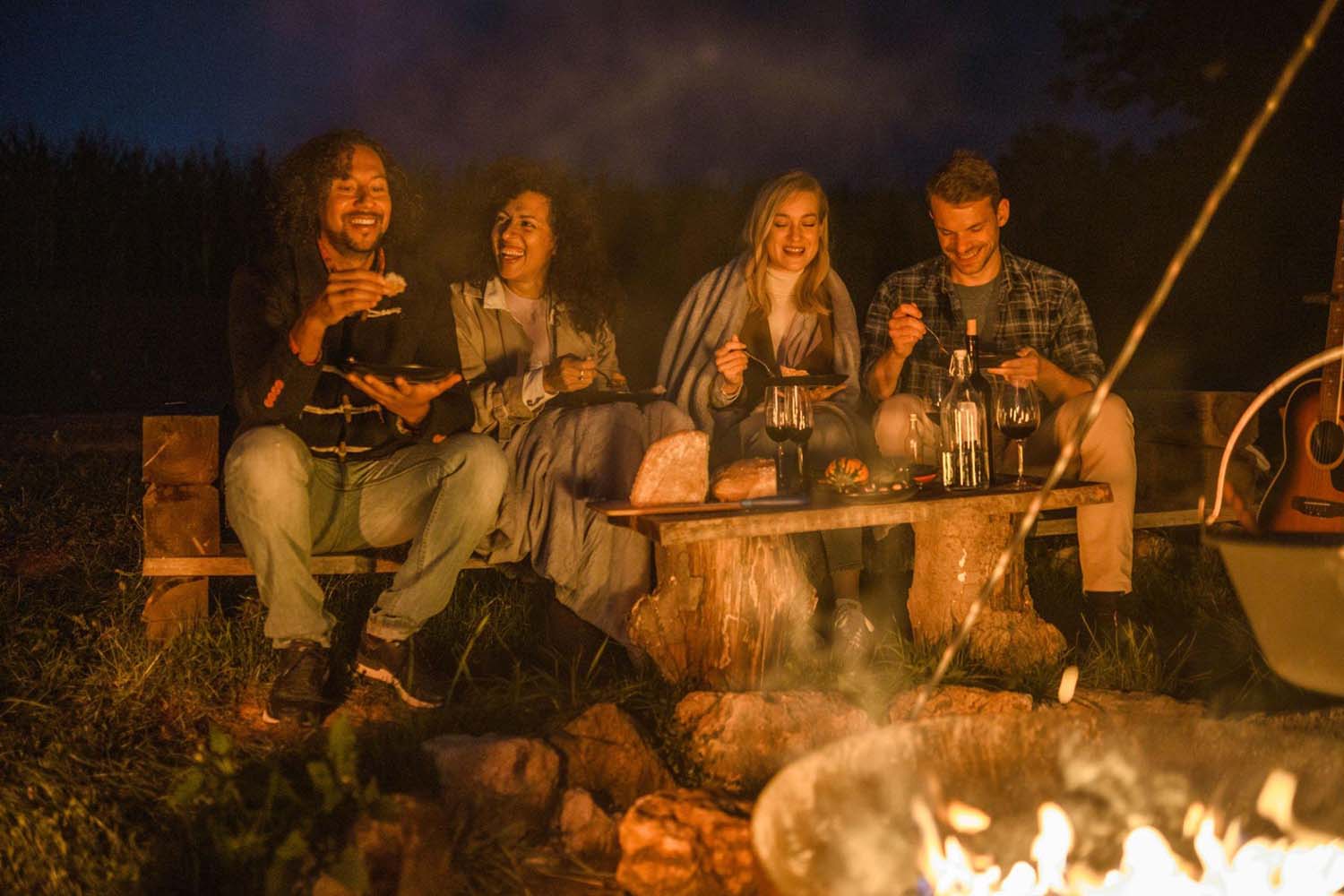
Camping Clothes, in Conclusion
Choosing the right camping clothing is more than just a fashion statement; it’s about prioritising your comfort, protection, and safety in the great outdoors. By following this guide, you’ll be well-equipped to face various weather conditions, temperatures, and terrains during your camping adventures.
Remember to dress in layers, starting with moisture-wicking base layers and adding insulating mid-layers and weather-resistant outer shells as needed. Don’t forget to pack a waterproof and breathable rain jacket to stay dry during unexpected showers. Additionally, prioritise fabrics that offer quick-drying properties and UV protection to enhance your camping experience.
Investing in proper footwear, such as hiking boots, will provide support and stability on challenging terrains. And don’t overlook the importance of accessories like hats, gloves, and socks, which offer additional protection and comfort.
While specialised camping clothing can enhance your experience, it’s not a necessity. With careful consideration of fabric choices and layering techniques, you can adapt regular clothing to meet your camping needs.
So, next time you embark on a camping trip, be prepared with the right clothing. Dressing appropriately will not only keep you comfortable but also allow you to fully immerse yourself in the beauty of nature, worry-free.
Remember, the key is to prioritise functionality, durability, and versatility. By choosing the right camping clothes, you’ll be ready to tackle any adventure that comes your way. Happy camping!
